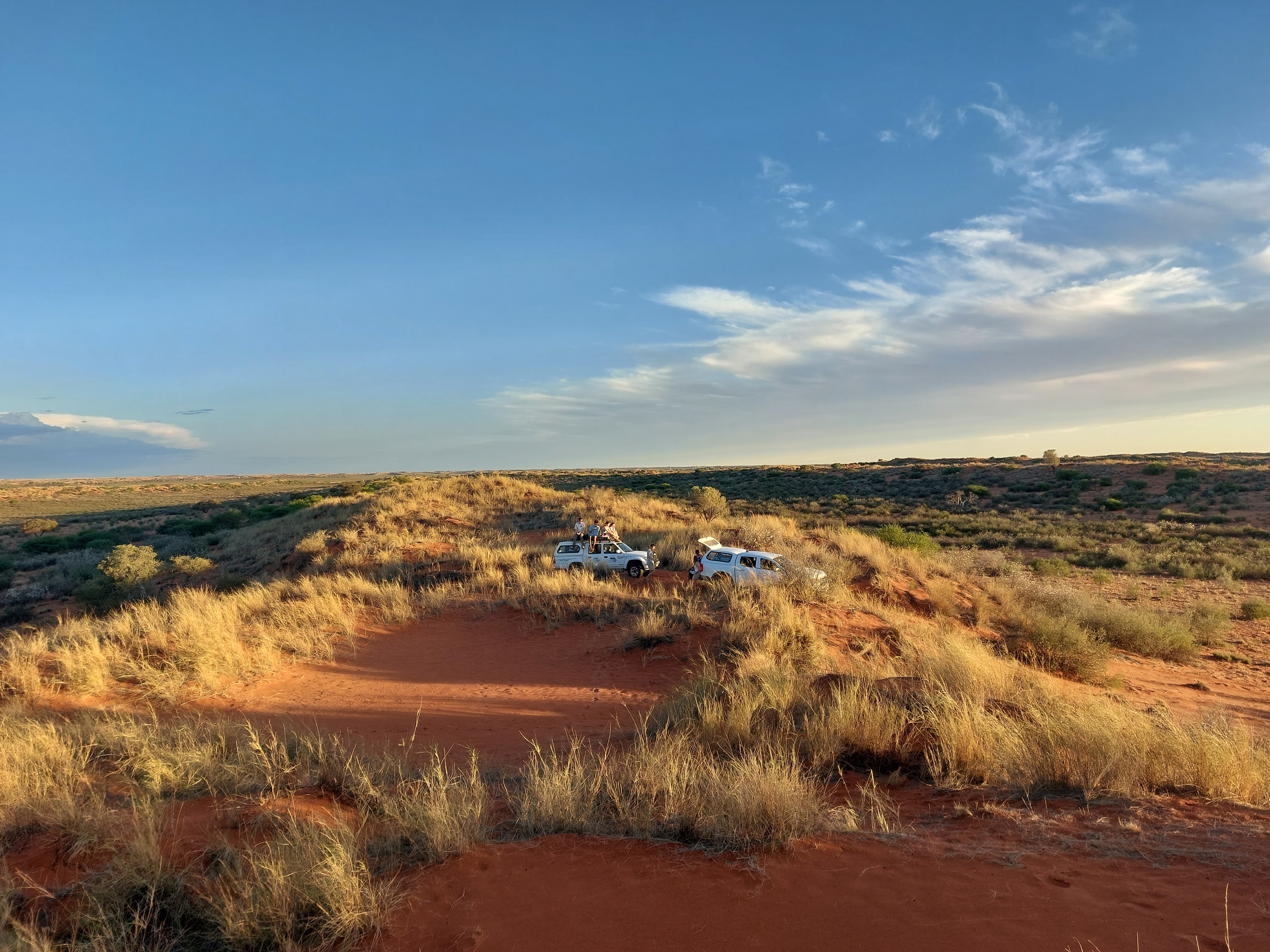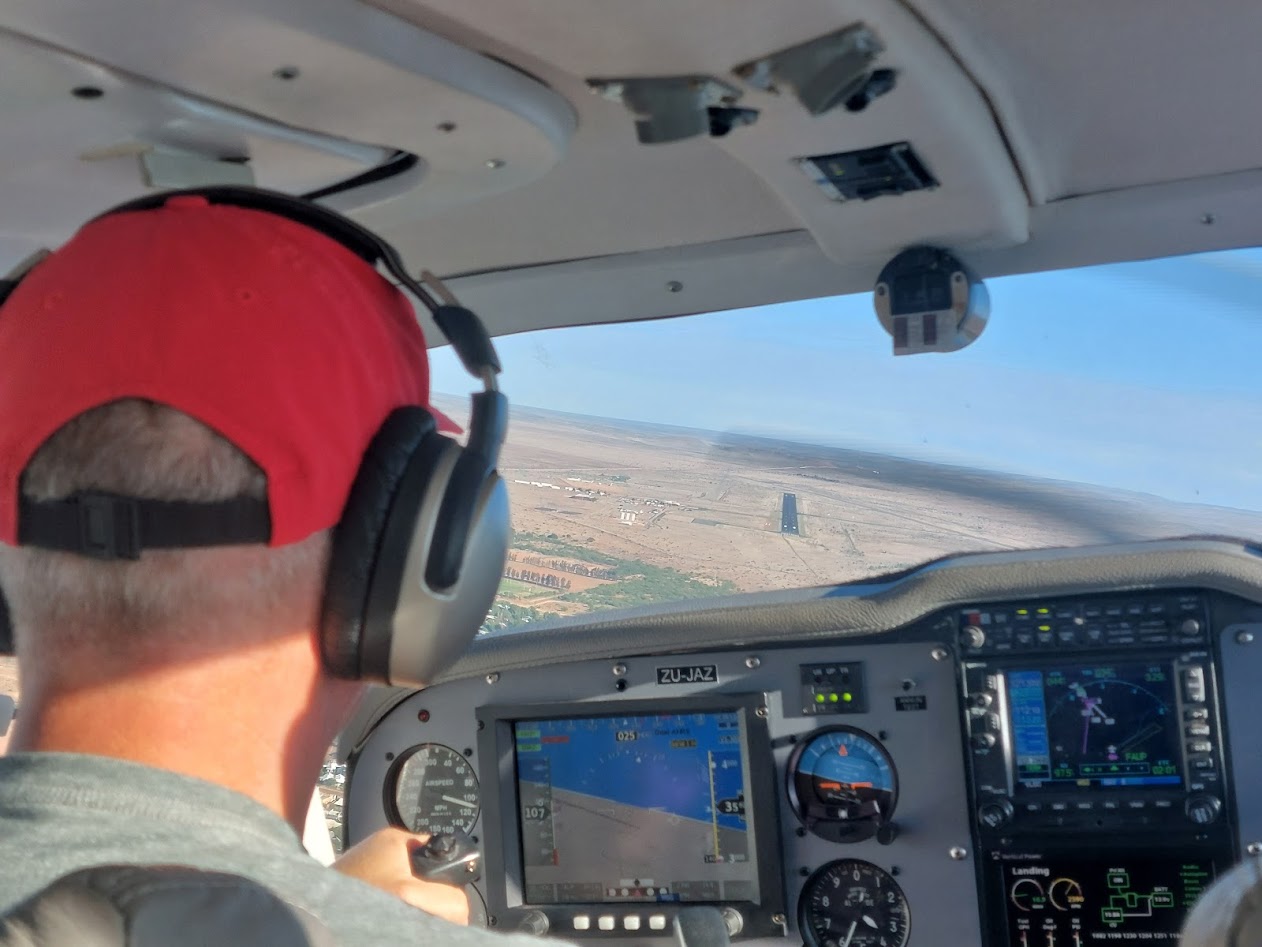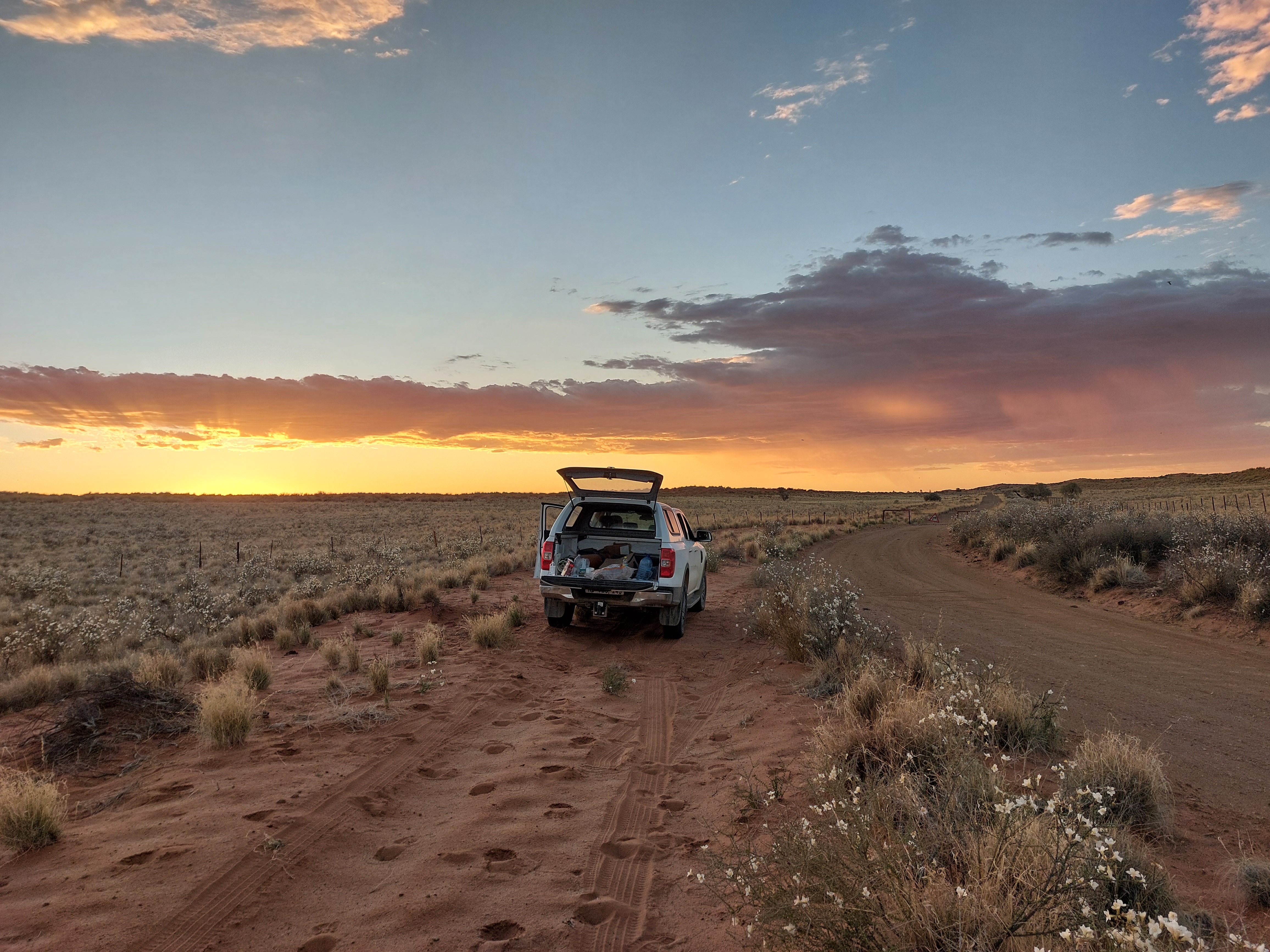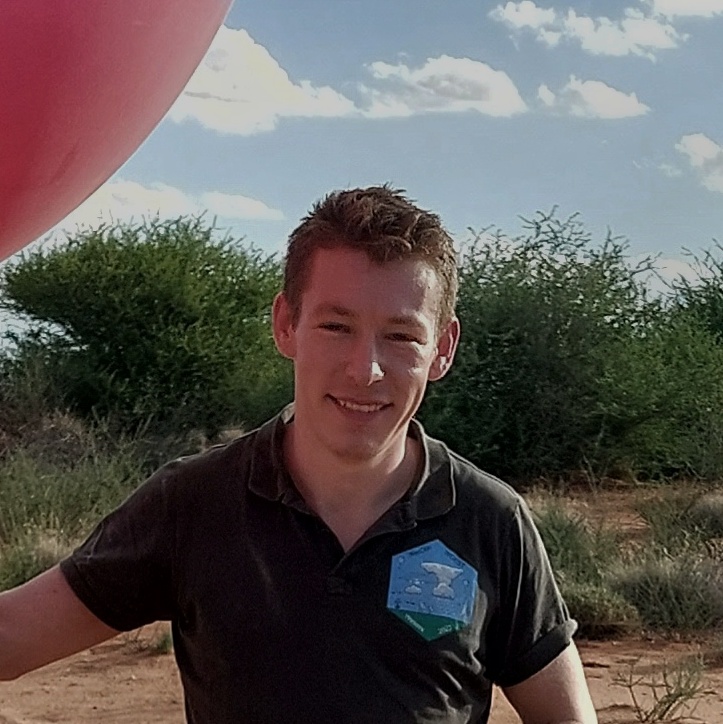The Kalahari is warming at over twice the global rate, with climate projections indicating a gradual drying of the region and more intense droughts. These trends pose a profound threat to communities who have lived here for millennia — and to the unique desert ecosystems that define the landscape. A crucial driver of these trends is the Kalahari Heat Low.
The Kalahari Heat Low is a low-level low-pressure system, driven by intense surface heating in the region. This cyclonic circulation disrupts wind and moisture patterns over vast distances and plays a central role in shaping where and when rain falls across southern Africa. It’s also closely tied to the formation of drylines, which create the sharp east-west gradient in rainfall across southern Africa
The Kalahari Atmospheric Processes Experiment (KAPEX) is the first major field campaign focused on the Kalahari Heat Low, designed to gather high-resolution observations and shed light on the dynamics of the feature. While similar campaigns in the Sahara have led to important advances in understanding northern Africa’s climate, the Kalahari — Africa’s second-largest desert — has, until now, remained largely uncharted in this respect.
 The linear dunes of deep red sand for which the Kalahari is famous provided a spectacular backdrop.
The linear dunes of deep red sand for which the Kalahari is famous provided a spectacular backdrop.
Our team, made up of researchers from Oxford and the University of Cape Town, operated from a site just south of the Kgalagadi Transfrontier Park in South Africa. Every four hours, we launched weather balloons, while a network of automatic weather stations, mobile transects, and even research flights helped build a fuller picture of atmospheric conditions. Forecast support from the UK Met Office — relayed via WhatsApp by James Warner — was a crucial guide through the heat, dust, and storms.
 Pilot Quentin Hurt lines up for landing at Upington Airport after a successful research flight across a dryline.
Pilot Quentin Hurt lines up for landing at Upington Airport after a successful research flight across a dryline.
The 43°C heat was challenging for both personnel and equipment. Radiosondes, ground stations, laptops and the LiDAR all fell victim to overheating, which was a constant challenge to maintaining regular and consistent observations. Keeping the LiDAR functioning was a particular challenge, requiring an improvised rig of reflective blankets, office fans and water cooling to maintain functionality through the heat of the day.
For more information visit the campaign website: https://kapex2024.com/
 The car is parked for a roving radiosonde release simultaneous with the main site to capture the progression of a dryline overhead.
The car is parked for a roving radiosonde release simultaneous with the main site to capture the progression of a dryline overhead.
Storms over moister air to the East over Botswana were a frequent source of evening entertainment.
Stunning night skies were a regular feature of this fieldwork. Here, the Milky Way, Large Magellanic Cloud and Small Magellanic Cloud are visible as are two satellites in low-earth orbit crossing bottom-right to top-left.
